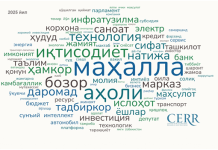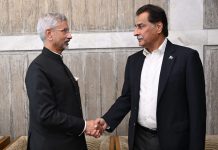Abdul Rashid Shakir
Perception building of the Government by showcasing its people-friendly policies through public diplomacy and persuasive communication by employing various tools like press releases, press notes, media talks, seminars and panel discussions; and projecting softer image of the country by leveraging its rich repository of arts & literature, culture & cuisine, history & heritage, hospitality & tourism, and topography & landscape by making use of different techniques of effective communication are the primary responsibilities of public sector media practitioners, working under the guidelines of Ministry of Information & Broadcasting.
Their responsibilities also include determining stall value of publications; be they dailies, weeklies, fortnightlies, monthlies, biannual or annual; and issuing them ABC (Audit Bureau of Circulation) certificates accordingly, categorizing TV channels based on their viewership and penetration in the public, managing public sector advertisements on behalf of the Federal Government through Public Sector Advertisement Policy to get best value for public money spent for the purpose by ensuring maximum media coverage. Additionally, on behalf of the Federal Government, Ministry of Information & Broadcasting is obliged to coordinate with and troubleshoot issues of journalists operating in print, electric, social and digital media; liaise with press clubs and media representative bodies like APNS (All Pakistan Newspaper Society), CPNE (Council of Pakistan Newspaper Editors), PBA (Pakistan Broadcasters Association), PAA (Pakistan Advertisers Association, PFUJ (Pakistan Federal Union of Journalists), APNEC (All Pakistan Newspaper Employees Confederation) and others.
Elections: Interim govt allocates Rs 17bn for security
Managing administrative affairs of public sector broadcasters like Pakistan Television (PTV), Pakistan Broadcasting Corporation (PBC) and Shalimar Recording & Broadcasting Company (SRBC) besides those of the public sector wire service, Associated Press of Pakistan (APP). Moreover, acting as a watchdog for print and electronic media in the light of their respective ethical code of conduct through Press Council of Pakistan (PCP) and Pakistan Electronic Media Regulatory Authority (PEMRA) respectively, besides exercising control on media production through the Central Board of Films Censor (CBFC) also comes under the purview of Ministry of Information & Broadcasting. And arguably perhaps one of its core functions is to build and promote a softer image of Pakistan internationally as an attractive trade and tourism hub, in sync with our foreign policy objectives, by exploring various tools of public and cultural diplomacy.
Thick fog engulfs Punjab plains
Once upon a time in the late 1940s and early 1950s when there were very few media outlets in the country both in the public and private sectors, this role was quite easy to perform both by the public sector media practitioners and their governing ministry, the Ministry of Information & Broadcasting. But with the opening up of private media outlets, especially after PEMRA Ordinance 2002, and the onslaught of social media, especially with the huge penetration of Facebook, X, Instagram, YouTube, TikTok, LinkedIn and other similar platforms in 2000s and 2010s, this task has become much more challenging rather embarrassing sometimes.
Digital and social media platforms have gained much traction especially in the youth which constitute some 65-68% of our more than 240 million population. Social media, one of the important means of interpersonal communication, has become a tool for manipulation in the modern tech-savvy world. As of January 2023, there were 71.7 million social media users out of the total 87.35 million internet users in the country. Therefore, social media has emerged as a robust tool of online communication and narrative building. It has enhanced our outreach by enabling us to share content online with a wider audience. Its platforms like Facebook, Instagram, Snapchat, YouTube, X and others have revolutionized our social interaction behaviour, and are fast-changing trends and agendas on matters ranging from environment and politics to technology and entertainment. Our ways of gathering and disseminating information along with our social interaction patterns have significantly changed because of the ubiquitous presence of social media in our lives. But unfortunately, the Ministry lacks proper paraphernalia to handle this ever-evolving media landscape. Despite tremendous growth of print, electronic, digital and social media outlets, the ministry is still trying to fire-fight day-to-day coverage and promotion of various Government policies aimed at socioeconomic development of people with its traditional human resource base and resources.

















